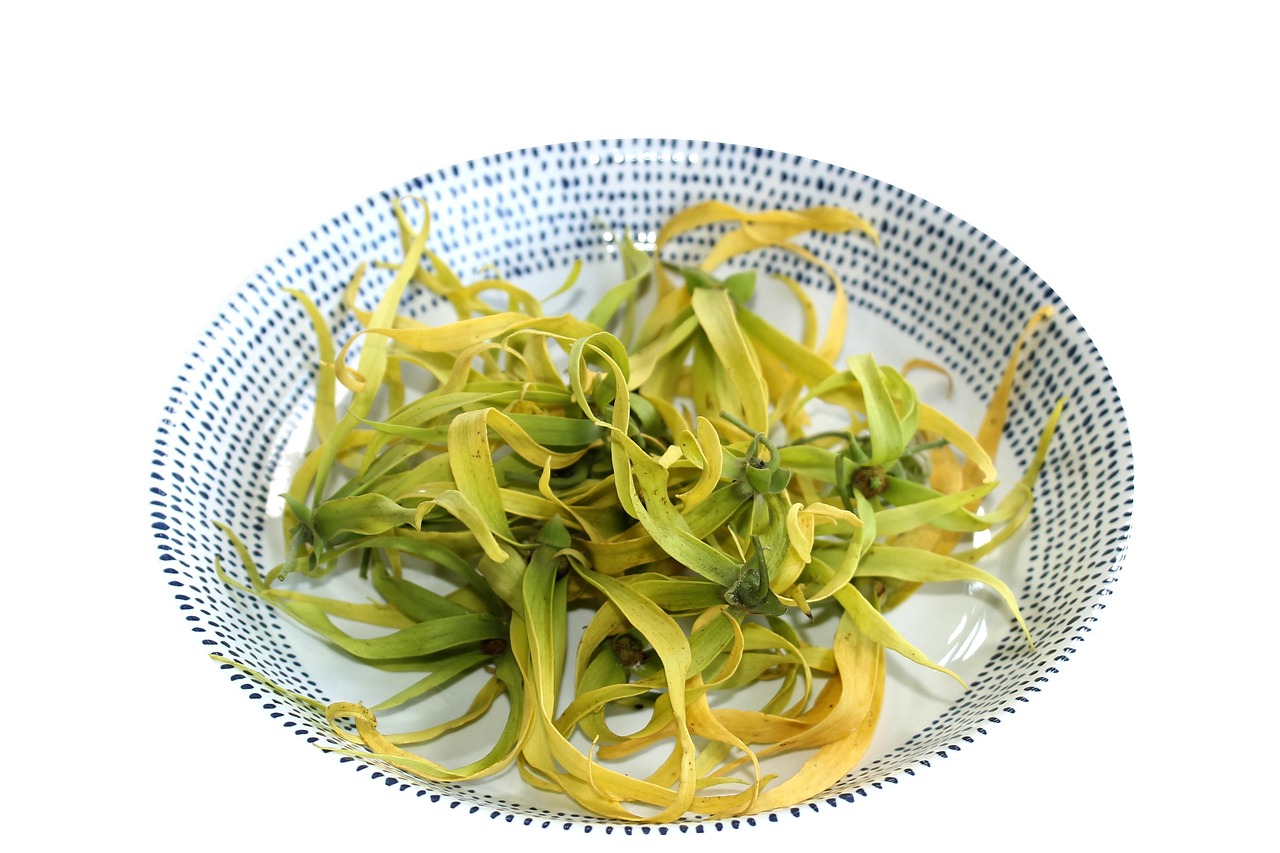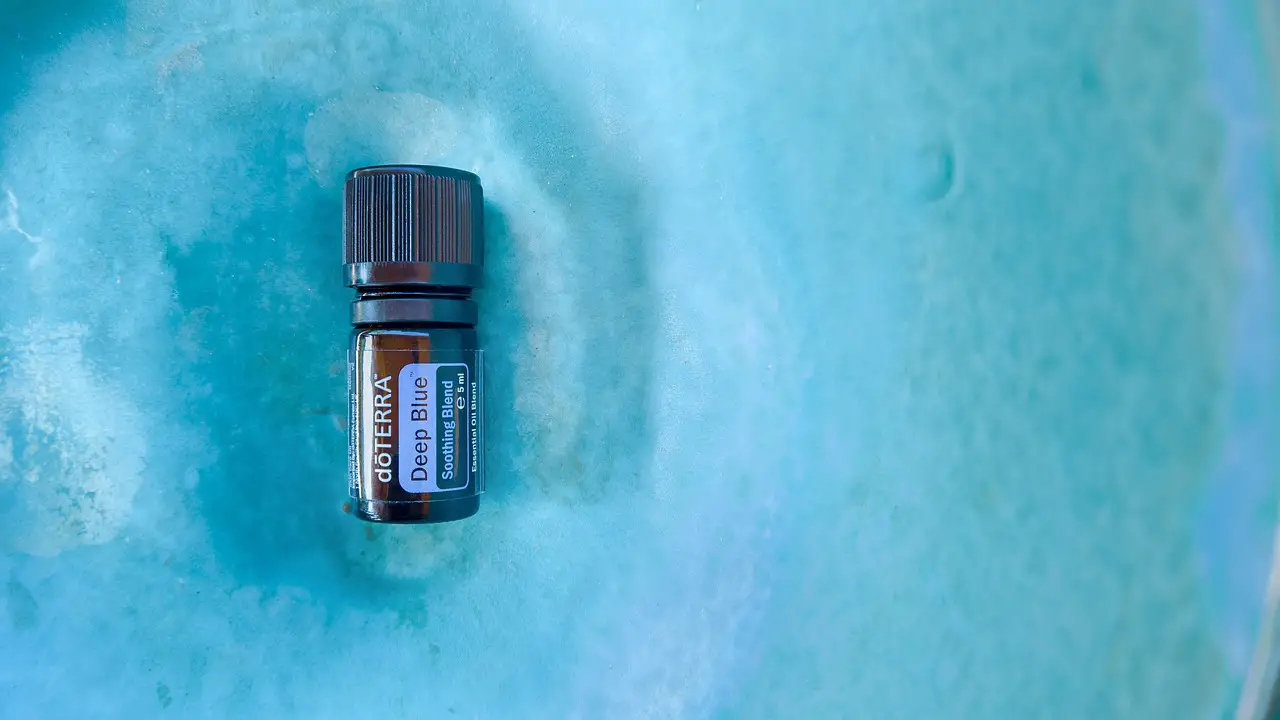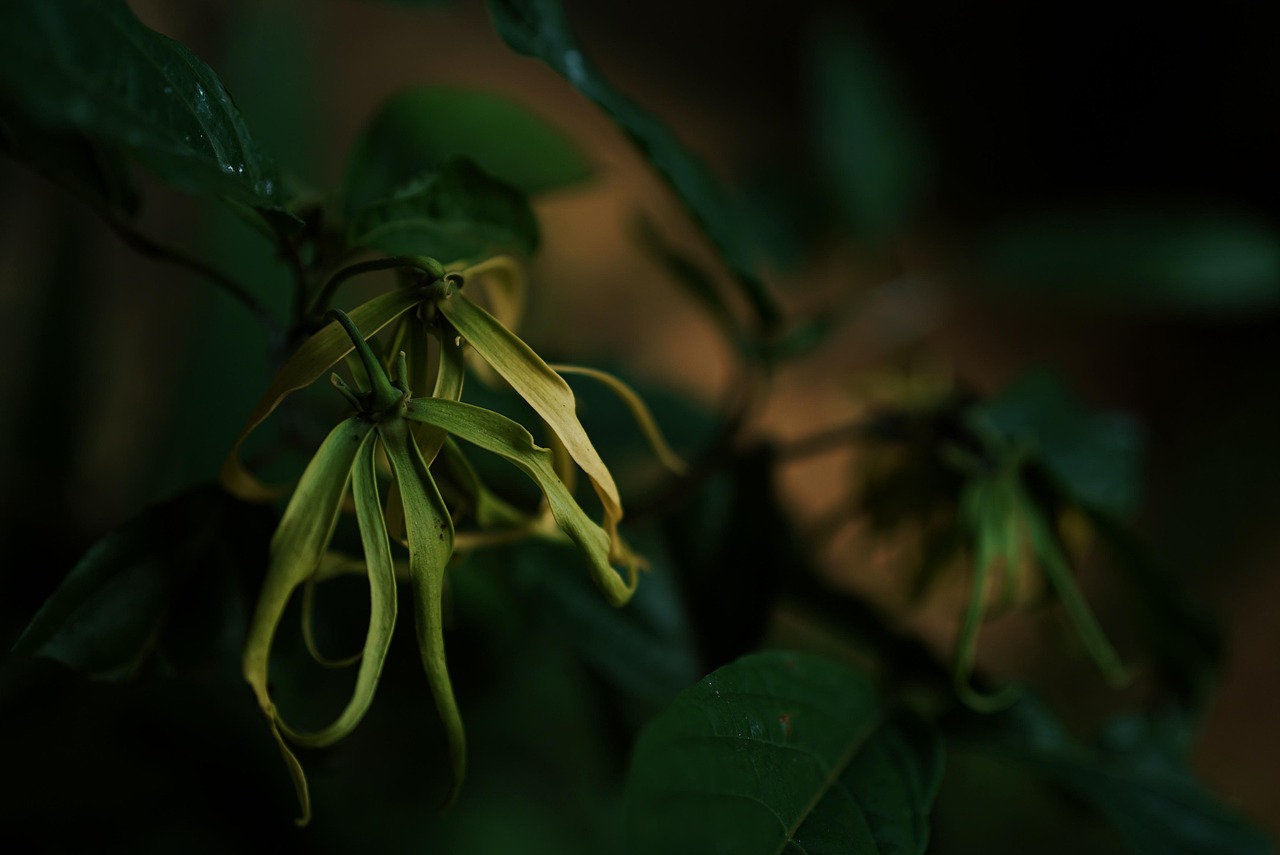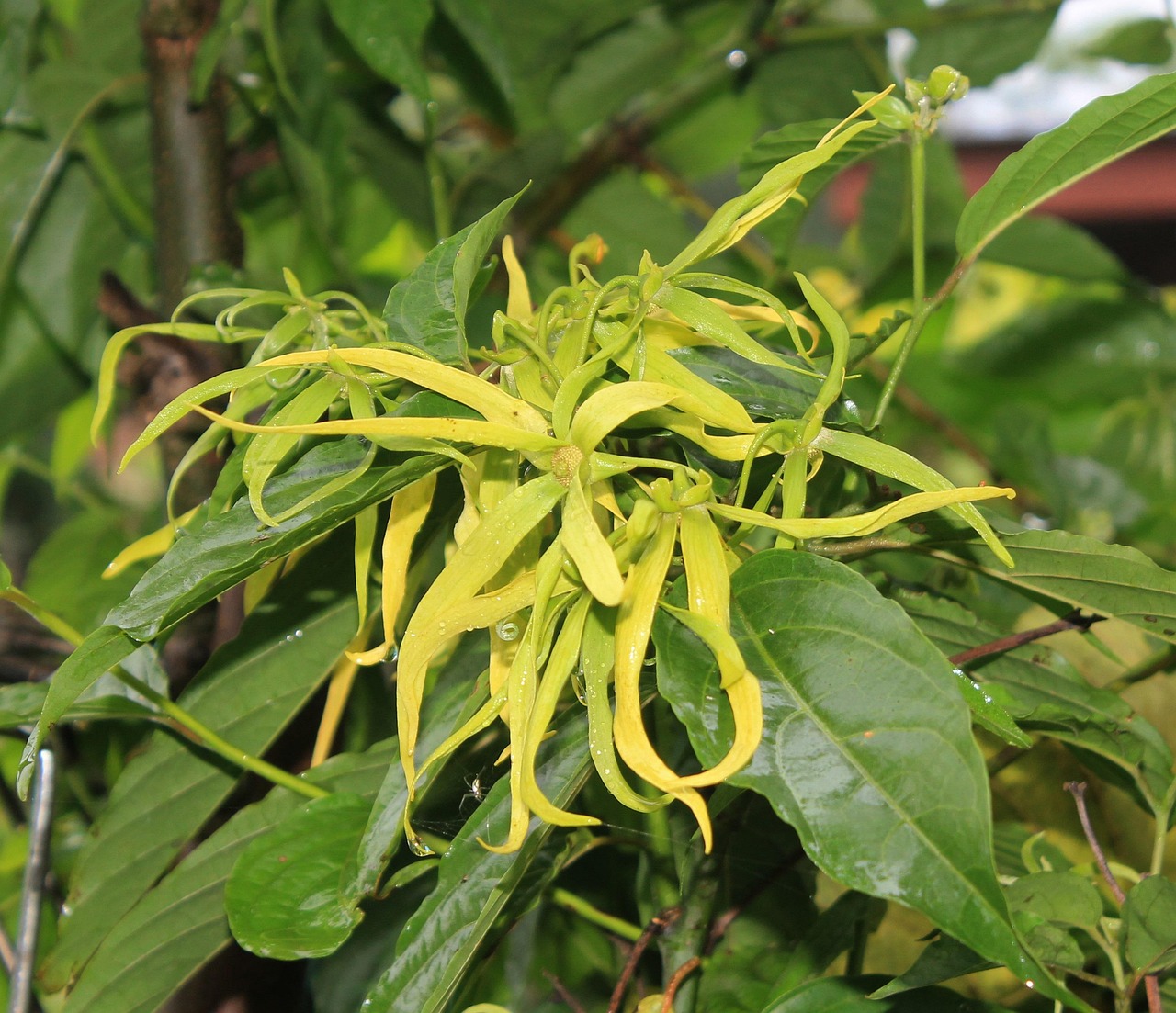The Ylang Ylang tree, known for its fragrant flowers, typically exhibits a moderate growth rate, reaching around 10 to 15 feet in height within 5 to 10 years under optimal conditions in tropical aromatic gardens.
Understanding the Ylang Ylang Tree
The Ylang Ylang tree, scientifically known as Cananga odorata, is a tropical tree native to Southeast Asia. It is celebrated for its beautiful, yellow, star-shaped flowers, which are highly valued in perfumery and aromatherapy. The tree thrives in humid, tropical climates, making it an ideal choice for aromatic gardens in regions that provide the right environmental conditions.

In terms of aesthetics, the Ylang Ylang tree not only offers stunning blooms but also has a lush canopy that provides shade and shelter for various garden plants. It can also attract pollinators such as bees and butterflies, enhancing the biodiversity of the garden.
Growth Rate and Conditions
The growth rate of the Ylang Ylang tree can vary based on several factors including soil quality, climate, and care practices. Under ideal conditions, the tree can grow between 3 to 5 feet per year. However, it may take longer in less favorable environments. Here are some key factors that influence its growth:
- Soil Quality: The Ylang Ylang tree prefers well-drained, rich soils. Nutrient-rich organic matter can significantly enhance its growth.
- Watering: Regular watering is essential, especially during dry spells. The tree thrives in moist conditions but does not tolerate waterlogging.
- Sunlight: Full sun is ideal for optimal growth, although young trees can benefit from some shade.
- Temperature: Being a tropical species, it requires warm temperatures and does not withstand frost.
Growth Stages
The growth of the Ylang Ylang tree can be divided into several stages. Understanding these stages helps gardeners provide appropriate care throughout the tree’s life cycle.

| Stage | Characteristics | Timeframe |
|---|---|---|
| Seedling | Initial growth phase with small leaves and roots developing. | 0-1 year |
| Juvenile | Rapid growth; tree begins to develop a thicker trunk and more foliage. | 1-3 years |
| Mature | Tree reaches full height; begins to produce flowers. | 3-5 years |
| Established | Full flowering potential; strong root system. | 5+ years |
This table outlines the various stages of growth for the Ylang Ylang tree. Understanding these stages can aid gardeners in making informed decisions about care and maintenance.
Cultivation Tips
Cultivating the Ylang Ylang tree requires attention to specific needs to ensure healthy growth. Here are some tips for successful cultivation:
- Fertilization: Use a balanced fertilizer during the growing season to promote vigorous growth and flowering.
- Pest Management: Monitor for pests such as aphids or scale insects. Early intervention can prevent serious infestations.
- Pruning: Prune dead or diseased branches to promote healthy growth and improve air circulation.
By following these cultivation tips, gardeners can create an environment that supports the healthy growth of the Ylang Ylang tree, enhancing both its beauty and aromatic contributions to tropical gardens.

Environmental Factors Affecting Growth
The growth rate of the Ylang Ylang tree is significantly influenced by various environmental factors. Understanding how each factor contributes to its development can help gardeners optimize conditions for better growth.
Climate
The ideal climate for the Ylang Ylang tree is warm and humid, typical of tropical regions. It thrives best in temperatures ranging from 65°F to 95°F. Here are some specifics regarding climate requirements:
- Humidity: High humidity levels, ideally above 50%, support healthy growth and flowering.
- Rainfall: The Ylang Ylang tree benefits from regular rainfall, ideally between 40 to 100 inches annually.
- Frost Sensitivity: This tree is sensitive to frost and should not be exposed to temperatures below 32°F.
Soil Composition
The soil in which the Ylang Ylang tree is planted plays a crucial role in its growth rate. A well-draining, rich soil composition is essential for optimal health.
- pH Level: The tree prefers slightly acidic to neutral soil, with a pH range of 6.0 to 7.0.
- Nutrients: Incorporating organic matter, such as compost, can enhance soil fertility and support healthy root development.
- Drainage: Good drainage is vital to prevent root rot, so sandy loam or loamy soils are recommended.
Propagation Methods
Understanding the propagation methods for the Ylang Ylang tree can help gardeners cultivate new plants effectively. Two primary methods are commonly used: seeds and cuttings.

Seed Propagation
Propagating the Ylang Ylang tree from seeds involves several steps:
- Seed Selection: Choose fresh seeds from healthy trees to ensure a higher germination rate.
- Preparation: Soak seeds in water for 24 hours before planting. This helps to soften the seed coat and promotes germination.
- Sowing: Plant seeds about 1 inch deep in a well-draining potting mix.
- Watering: Keep the soil consistently moist but not waterlogged.
- Germination Time: Seeds typically germinate within 2 to 4 weeks under optimal conditions.
Cutting Propagation
An alternative to seed propagation is taking cuttings from mature trees. This method can lead to faster results.
- Selecting Cuttings: Choose healthy, semi-hardwood cuttings that are at least 6 inches long.
- Treating Cuttings: Dip the cut end in rooting hormone to encourage root development.
- Planting: Insert the cutting into a pot filled with a well-draining potting mix, ensuring at least one node is buried in the soil.
- Mist and Cover: Mist the cuttings regularly and consider covering them with a plastic bag or dome to maintain humidity.
- Rooting Time: Roots should develop in approximately 4 to 8 weeks.
Caring for Young Trees
Caring for young Ylang Ylang trees is crucial for their early development and long-term health. Proper attention during the initial years sets the foundation for robust growth.
- Watering Schedule: Young trees require more frequent watering. It is essential to keep the soil consistently moist but not soggy.
- Mulching: Applying a layer of mulch helps retain moisture and suppress weeds around young trees.
- Pest Monitoring: Regularly check for signs of pests or diseases, particularly during the growing season.
- Support Structure: If necessary, provide support for young trees to protect them from strong winds.
By understanding these aspects of Ylang Ylang tree growth and care, gardeners can enhance their success in cultivating this aromatic treasure in tropical gardens. Each factor plays a significant role in ensuring that the tree reaches its full potential both in beauty and fragrance.
Common Pests and Diseases
The Ylang Ylang tree, while generally hardy, can be susceptible to various pests and diseases. Identifying these issues early is key to maintaining the health of the tree and ensuring optimal growth.
Pests
Several common pests may infest the Ylang Ylang tree, causing damage to leaves and flowers. Here are some of the most frequent culprits:
- Aphids: These small, sap-sucking insects can weaken the tree by draining its nutrients. They also excrete a sticky substance known as honeydew, which can lead to sooty mold.
- Spider Mites: Often found in dry conditions, spider mites create fine webs on leaves and can cause leaf discoloration and drop.
- Mealybugs: These pests appear as white, cottony masses on stems and leaves. They can reduce plant vigor by sucking sap.
- Scale Insects: Scale insects attach themselves to stems and leaves, appearing as small bumps. They can severely weaken the tree if left untreated.
Diseases
The Ylang Ylang tree may also face several diseases that can affect its overall health. Some common diseases include:
- Root Rot: Caused by overwatering or poor drainage, root rot can lead to wilting and yellowing leaves, ultimately killing the tree.
- Powdery Mildew: This fungal disease appears as a white powdery substance on leaves, affecting photosynthesis and overall growth.
- Leaf Spot: Fungal infections can cause dark spots on leaves, leading to premature leaf drop and reduced vigor.
Pest and Disease Management
Effective management strategies can help control pests and diseases in Ylang Ylang trees. Implementing an integrated approach will often yield the best results.
Preventative Measures
Taking proactive steps can significantly reduce the risk of pest and disease infestations:
- Healthy Soil: Ensure that the soil is rich in organic matter to promote healthy growth and resilience against pests.
- Watering Practices: Avoid overhead watering to reduce humidity around leaves, which can help prevent fungal diseases.
- Regular Inspections: Frequently check your trees for early signs of pests or diseases to allow for timely intervention.
Treatment Options
If pests or diseases are detected, several treatment options are available:
- Insecticidal Soap: This can be effective against soft-bodied insects like aphids and mealybugs. Apply according to label directions for best results.
- Natural Predators: Introducing beneficial insects such as ladybugs or lacewings can naturally reduce pest populations.
- Fungicides: For fungal diseases like powdery mildew or leaf spot, applying a fungicide may help manage outbreaks. Always follow the product instructions for application rates and timing.
- Pruning: Remove severely affected branches or leaves to help control the spread of disease.
The Role of Pollinators
The Ylang Ylang tree not only attracts attention for its fragrant blooms but also serves an important ecological role by attracting pollinators. Understanding this aspect can enhance garden biodiversity.
Attracting Pollinators
The flowers of the Ylang Ylang tree are known to attract various pollinators, which play a crucial role in its reproduction. Here are some key points about its relationship with pollinators:
- Aromatic Flowers: The sweet scent of Ylang Ylang flowers attracts bees, butterflies, and hummingbirds, making it an excellent choice for pollinator-friendly gardens.
- Flower Structure: The star-shaped flowers provide easy access to nectar, encouraging frequent visits from pollinators.
- Biodiversity Support: By planting Ylang Ylang trees, gardeners contribute to local ecosystems by supporting the health of pollinator populations.
Creating a Pollinator-Friendly Garden
To optimize attraction of pollinators to your garden, consider the following strategies:
- Diverse Plant Selection: Incorporate a variety of flowering plants that bloom at different times throughout the year to provide a continuous food source.
- Avoid Pesticides: Limit or eliminate pesticide use, as these chemicals can harm beneficial pollinators.
- Create Habitat: Provide nesting sites and shelter for pollinators by including shrubs and ground cover in your garden design.
By understanding the importance of pollinators in relation to the Ylang Ylang tree, gardeners can create vibrant, thriving spaces that contribute positively to the environment while enjoying the beauty and fragrance of this remarkable plant.
Additional Uses of Ylang Ylang
The Ylang Ylang tree is not only valued for its aesthetic appeal and fragrance but also has a variety of uses that enhance its significance in gardens and beyond. Here are some notable applications:
Aromatic Oils
The primary use of Ylang Ylang flowers is in the production of essential oils. These oils are widely used in perfumery and aromatherapy due to their sweet, floral scent. The oil is extracted through steam distillation and has several properties:
- Relaxation: Ylang Ylang essential oil is known for its calming effects, helping to reduce stress and anxiety.
- Skin Benefits: The oil may improve skin health, providing hydration and promoting a youthful appearance.
- Aphrodisiac Properties: Traditionally, Ylang Ylang oil has been used as an aphrodisiac, enhancing mood and intimacy.
Culinary Uses
In some cultures, Ylang Ylang flowers are used in culinary applications. The petals can be added to salads or used to infuse beverages, providing a unique flavor profile. However, caution should be exercised as excessive consumption may lead to adverse effects.
Medicinal Uses
In traditional medicine, various parts of the Ylang Ylang tree have been utilized for their potential health benefits:
- Anti-inflammatory: Extracts from the tree may help reduce inflammation in the body.
- Heart Health: Some studies suggest that Ylang Ylang can aid in lowering blood pressure and improving overall heart health.
- Aiding Digestion: The flowers have been used in herbal remedies to relieve digestive issues.
Landscaping with Ylang Ylang
Incorporating the Ylang Ylang tree into landscaping designs can enhance the beauty and functionality of outdoor spaces. Here are some considerations for using this tree in landscape projects:
Design Ideas
The Ylang Ylang tree can serve various roles in landscaping:
- Specimen Tree: Due to its unique structure and fragrant flowers, it makes an excellent focal point in any garden.
- Shade Provider: The tree’s broad canopy provides shade, making it ideal for relaxing outdoor spaces.
- Buffer Planting: Planting Ylang Ylang trees can create natural barriers that help reduce noise pollution and provide privacy.
Companion Planting
When planting Ylang Ylang trees, consider companion plants that enhance growth and create a balanced ecosystem. Suitable companions include:
- Citrus Trees: These trees thrive in similar environments and benefit from mutual soil enhancements.
- Tropical Flowers: Plants like hibiscus and plumeria complement the aesthetic appeal while attracting pollinators.
- Herbs: Aromatic herbs such as basil and mint can thrive alongside Ylang Ylang, benefiting from similar moisture and light requirements.
Final Thoughts
The Ylang Ylang tree is a remarkable addition to any tropical aromatic garden. Its moderate growth rate, stunning blooms, and fragrant flowers make it a favorite among gardeners and landscape designers alike. By understanding its growth requirements, care practices, and potential uses, gardeners can maximize the benefits of this unique tree.
From its essential oils to its role in supporting pollinator populations, the Ylang Ylang tree offers numerous advantages that extend beyond mere aesthetics. Engaging with this plant promotes not only personal enjoyment but also contributes positively to local ecosystems.
As you consider adding a Ylang Ylang tree to your garden, remember the importance of creating an environment that supports its growth. Maintain healthy soil, monitor for pests, and embrace sustainable gardening practices. The rewards will be fragrant blooms, enhanced biodiversity, and a beautiful space that thrives for years to come.
In conclusion, the cultivation of Ylang Ylang trees serves as a testament to the beauty of nature’s offerings. With proper care, these trees can flourish, enriching our gardens and our lives with their enchanting fragrance.
